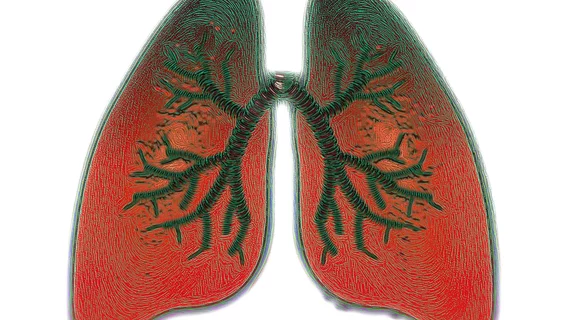Ultrasound has emerged as a strong contender for first-line status among imaging modalities used in emergency settings for diagnosing COVID-19.
It has also shown promise as a comprehensive diagnostic tool for tracking disease progression in COVID-positive patients.
Those are among the observations offered by a 10-expert panel following an online discussion the group held in mid-March. Academic Emergency Medicine published an advance summary report of the session April 29.
“Ultrasound as a diagnostic test presents distinct advantages for imaging in COVID-19,” write lead report author and session moderator Rachel Liu, MD, and colleagues. “It is a mobile technology that can be used in diverse environments, including in triage tents or makeshift hospitals that are now established for COVID-19 evaluation at many centers.”
Liu is director of point-of-care ultrasound (POCUS) education at Yale School of Medicine. She and all her interlocuters at the March webinar, including two from virus hotspots in Europe, are emergency physicians with COVID-19 experience.
The group’s report suggests five reasons diagnostic ultrasound deserves serious consideration for imaging patients with suspected COVID infection:
1. Both a completely normal lung ultrasound and a decidedly abnormal one may provide key clinical insights. If noted during initial evaluation, normal findings on lung ultrasound would help exclude additional imaging, Liu and colleagues point out. Meanwhile, lung abnormalities on ultrasound that align with COVID-19 imaging markers might help clinicians steer stricken patients to an appropriate inpatient unit before lab results are even in.
“It is unclear whether B-line or consolidation thresholds exist that predict significant clinical deterioration in well-appearing patients who display lung findings,” the authors comment. “Observations that ultrasound findings may precede clinical symptoms suggest that ultrasound may identify more severe illness prior to the development of severe symptoms.”
2. Lung ultrasound may help rule out other pulmonary diseases. This includes pleural effusion and pneumothorax, Liu and colleagues write, suggesting this benefit is worthwhile for initial diagnosis even though lung ultrasound may not be of much use in patients who are already very sick with COVID-19.
3. Cardiac ultrasound could detect heart problems caused or exacerbated by COVID-19. Liu and colleagues recommend emergency departments incorporate focused cardiac ultrasound into workups of symptomatic COVID-19 patients.
“Early reports suggest there may be direct cardiac ramifications of COVID-19, including gross left ventricular dysfunction and potential right ventricular dilation,” the authors write. “Additional to lung ultrasound, cardiac views including the inferior vena cava can help identify or exclude cardiac dysfunction.”
4. Ultrasound may benefit critically ill patients requiring peripheral or central venous access. Ultrasound can guide venous access, peripherally or centrally, in critically ill patients who need such intervention. “Due to respiratory distress, some patients are unable to lie flat, making central venous access difficult,” the authors clarify. “Ultrasound also assists in diagnosis of venous thromboembolism.”
5. POCUS in particular can reduce the headcount of healthcare workers needed—and thus exposed—while supplying immediate diagnostic information. For this to work, of course, the clinician must obtain the images at the bedside and interpret them there too. And the clinician still must take special care with equipment and processes, the authors underscore, to keep the infection contained within the room.
Liu and co-panelists also run through the relative pros and cons of using lung CT or chest x-ray for COVID-19 imaging, and they describe additional benefits of ultrasound.
Click here to read the full report (click PDF icon) and here to view the online discussion (recording begins with session in progress).

